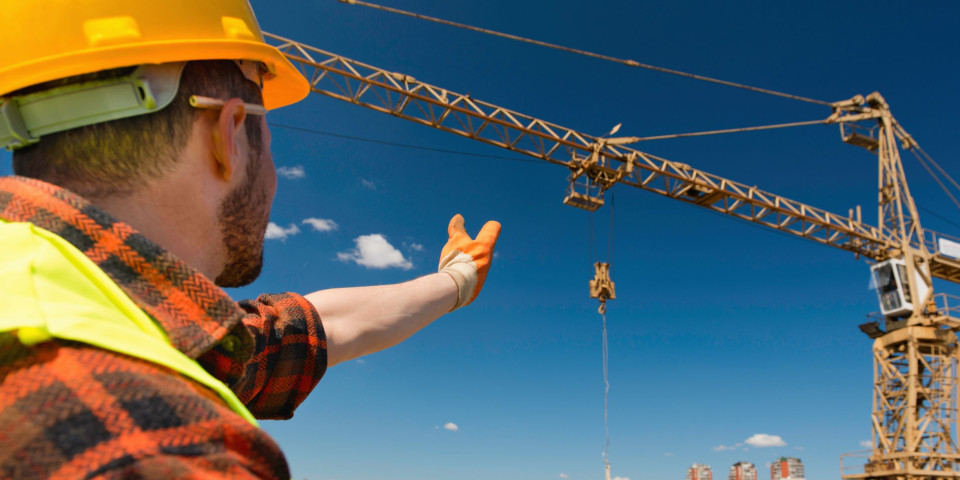Latest News
Slinger Course - What is a Slinger Signaller?
Posted on Friday, 17th May 2019

A Slinger Signaller position is one of the most important jobs on a construction site. A Slinger needs to have excellent skills in order to work alongside lifting teams providing safety directions and supervising lifts. The role requires good observation and concentration skills in order to keep operators and other site personnel safe.
Whether you’re looking for a Slinger course or just want to find out a little bit more about the role, read on.
What is a Slinger Signaller?
A Slinger Signaller acts as the eyes and ears of the person operating the crane who won’t be able to see everything happening around them. An obstructed view for a Crane Operator increases loading and lifting risks, and general site safety can be compromised.
Enter the Slinger Signaller; a Slingers' main responsibility is to communicate with the Crane Operator using a series of hand signals. These hand signals help the operator to manoeuvre the crane in a safe and efficient way.
The standard hand signals used in the UK by Slinger Signallers are laid out in BS7121 which is the code of practice for the safe use of cranes. Also some signals can be found in the Health and Safety (Signs and Signals) Regulations 1996. Although some of these signals are similar the majority of the signals in the regulation would be used for plant and vehicle marshalling and not in the role of Slinger Signaller. The signals must be precise, easy to make, and easy to understand.
Sometimes, the basic set of signals will not be enough and more may be added, these should always be agreed with the Crane Operator beforehand though.
In other times, adverse weather, such as fog or heavy rain may render hand signals useless. In these circumstances’ batons can be used as a substitute. But a more widely used alternative would be two - way radios. Radios are commonly used by Slinger Signallers that work with tower cranes where the line of sight is often lost. A Slinger Signaller has the authority to halt operations if they deem the conditions too dangerous to continue working.

Slinger Signaller Training
As mentioned, the role of the Slinger Signaller is an important one and the safety of others rests on their actions. As such, specialist training is needed to ensure that the Slinger is competent to carry out their job safely and effectively.
No type of course is compulsory for a Slinger Signaller; there are several options that an employee could choose from. However, whatever training is chosen, it must provide the learner with a good understanding of:
- Relevant regulations affecting their job
- Operational requirements of the lifting project
- Features and safe use of equipment
- Official Slinger Signaller hand signals
- Causes of accidents
- How to prevent accidents
- Procedures for manoeuvring equipment
- Their legal responsibilities
As such, the role of a Slinger/Signaller is essential on all sites and is highly valued by employers and co-workers alike because of the high level of risk involved with the job they do.

Slinger Signaller Courses
There are several training options for someone wanting to become a Slinger Signaller. One of the most popular is the CPCS Slinger Signaller course. Other options such as NPORS or an NVQ would also be appropriate. The route chosen usually depends on the employee’s future career plans, budget and employer requirements.
CPCS Slinger Signaller – you can book this course online
Level 2 NVQ in Controlling Lifting Operations - Slinger/Signaller
CPCS courses are available for online booking now. For details and locations of any of the other courses or information on funding for NVQs, please get in touch.
A member of our team will be happy to help you choose the best course for yourself or an employee.


